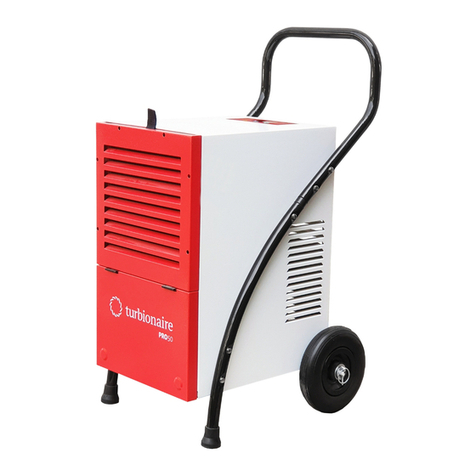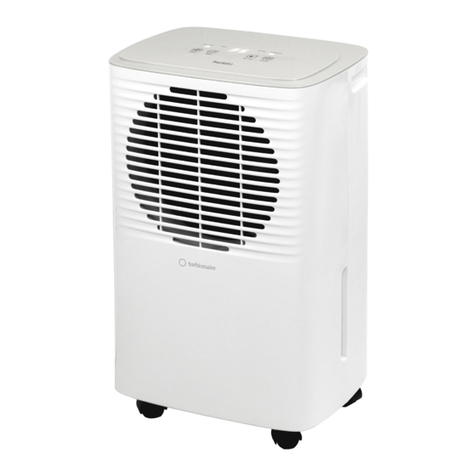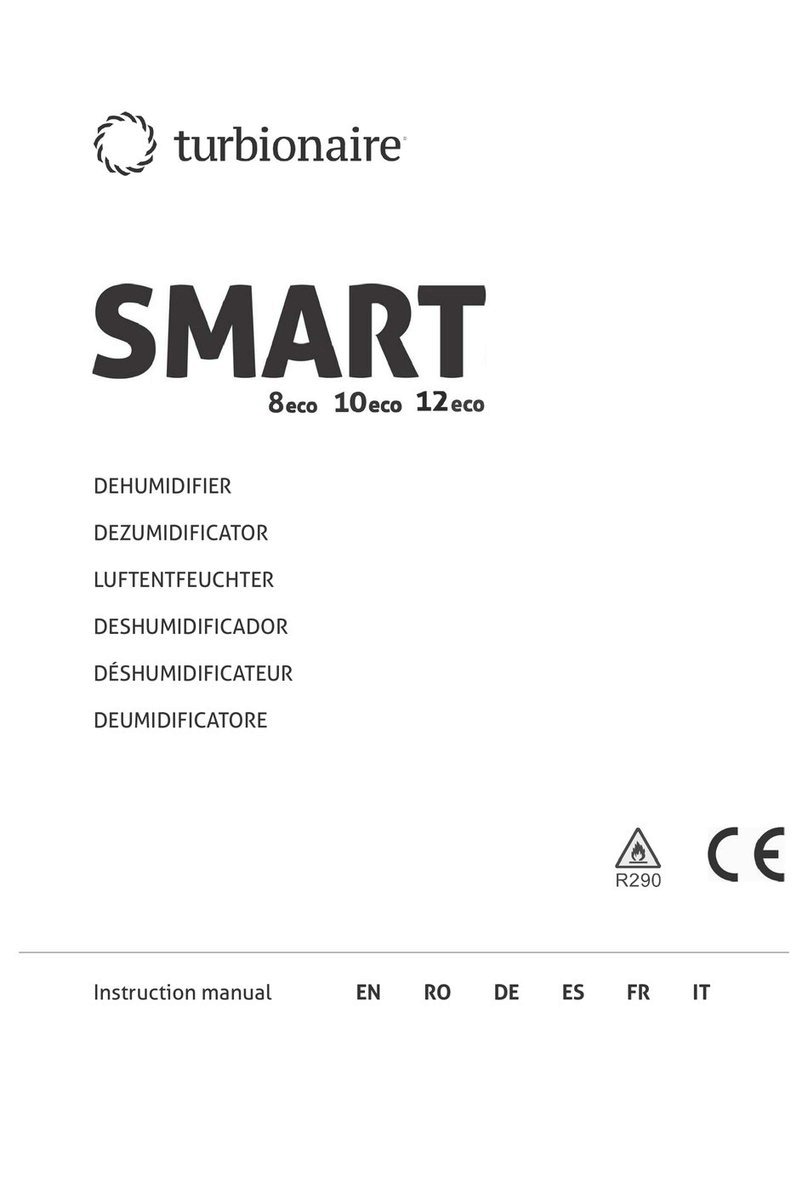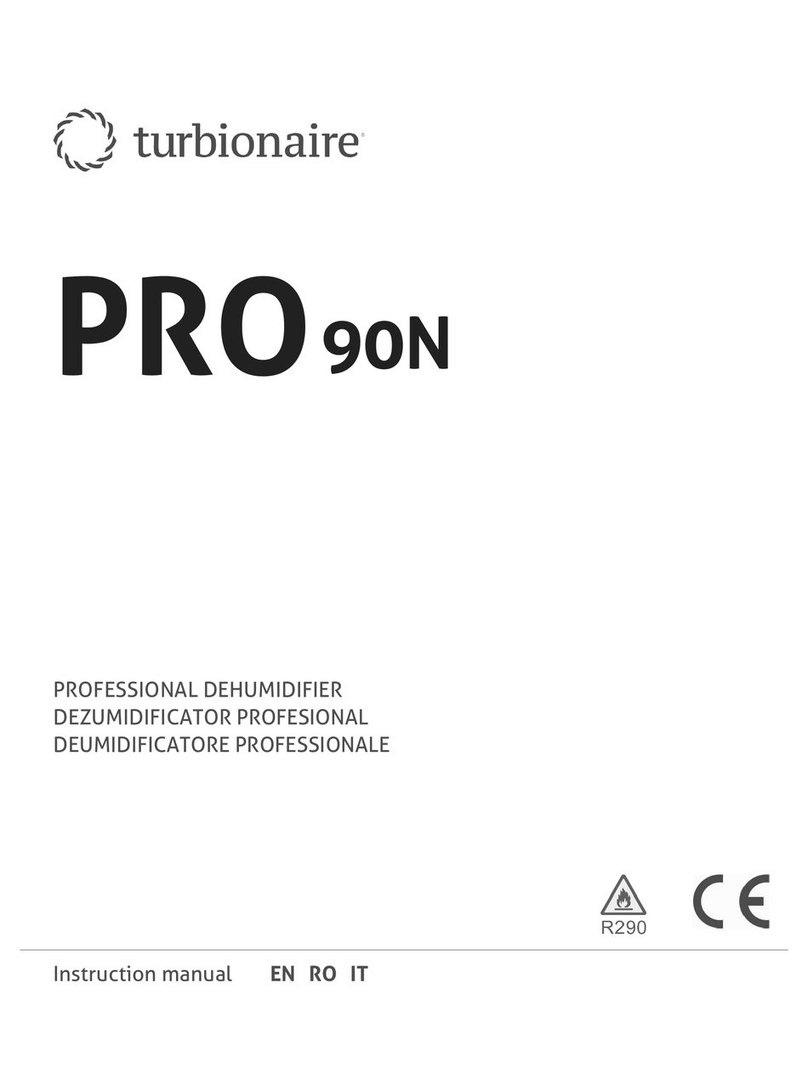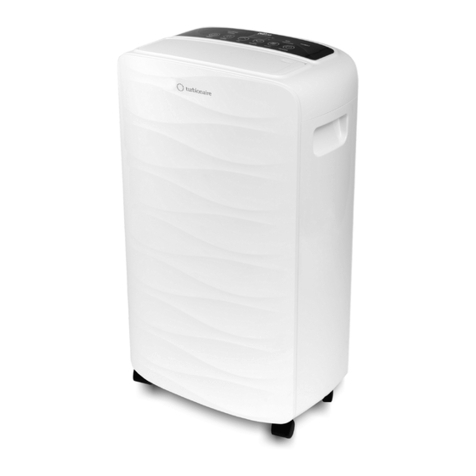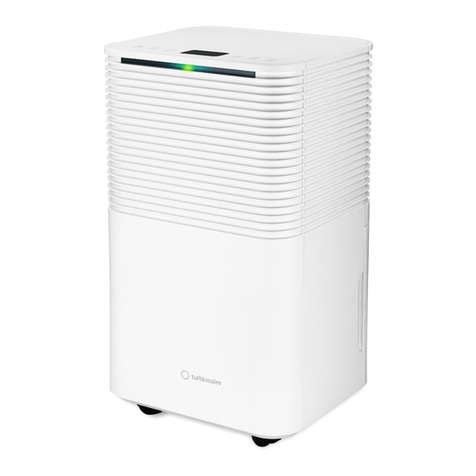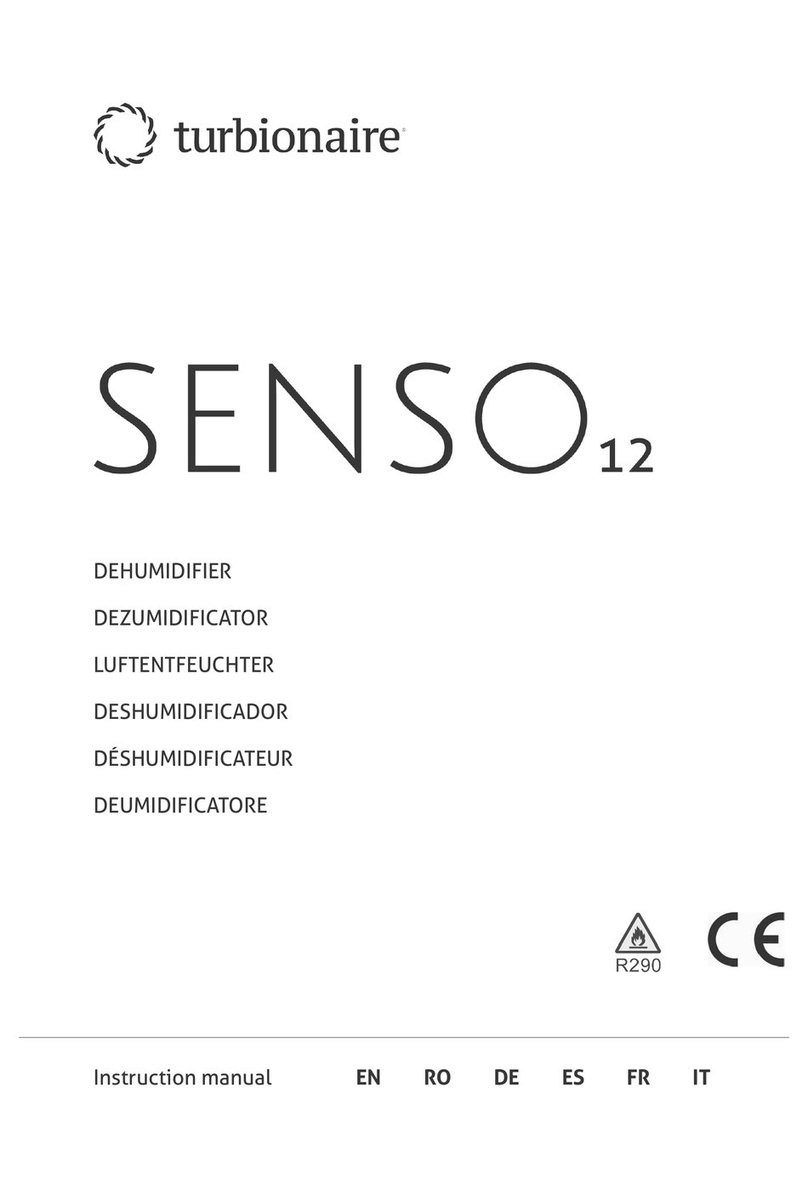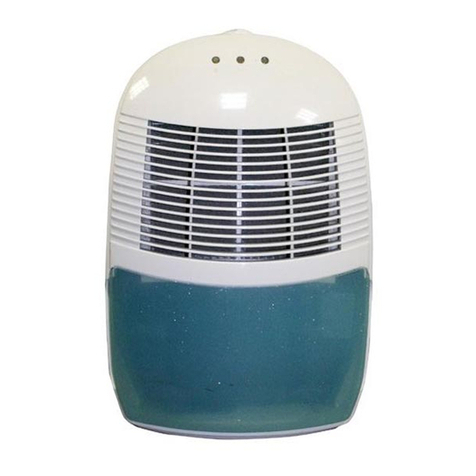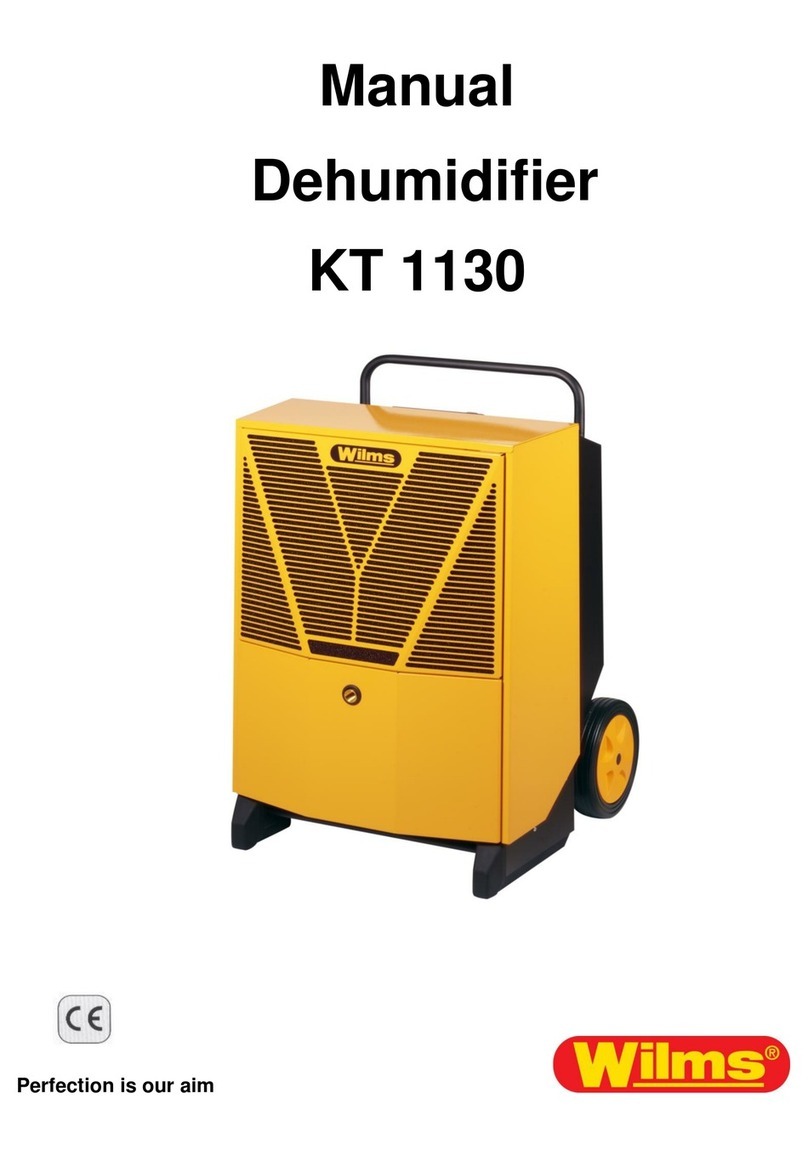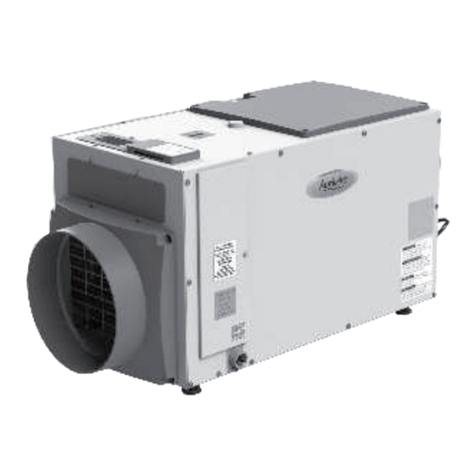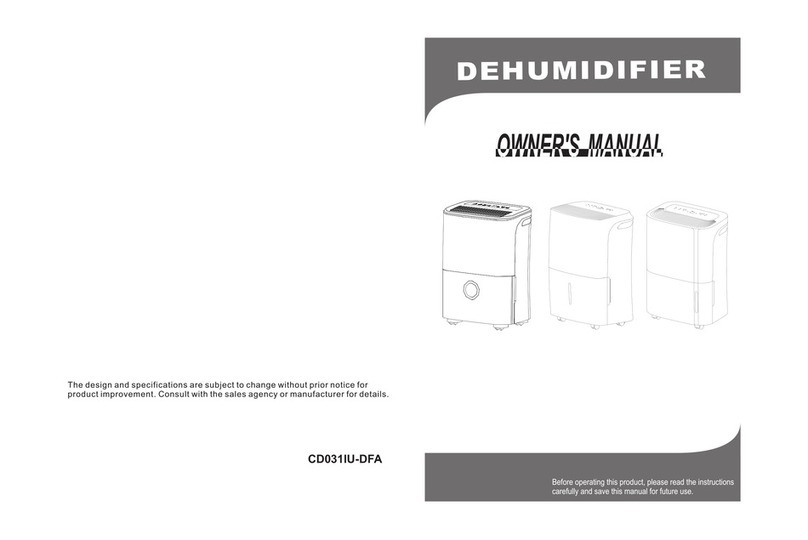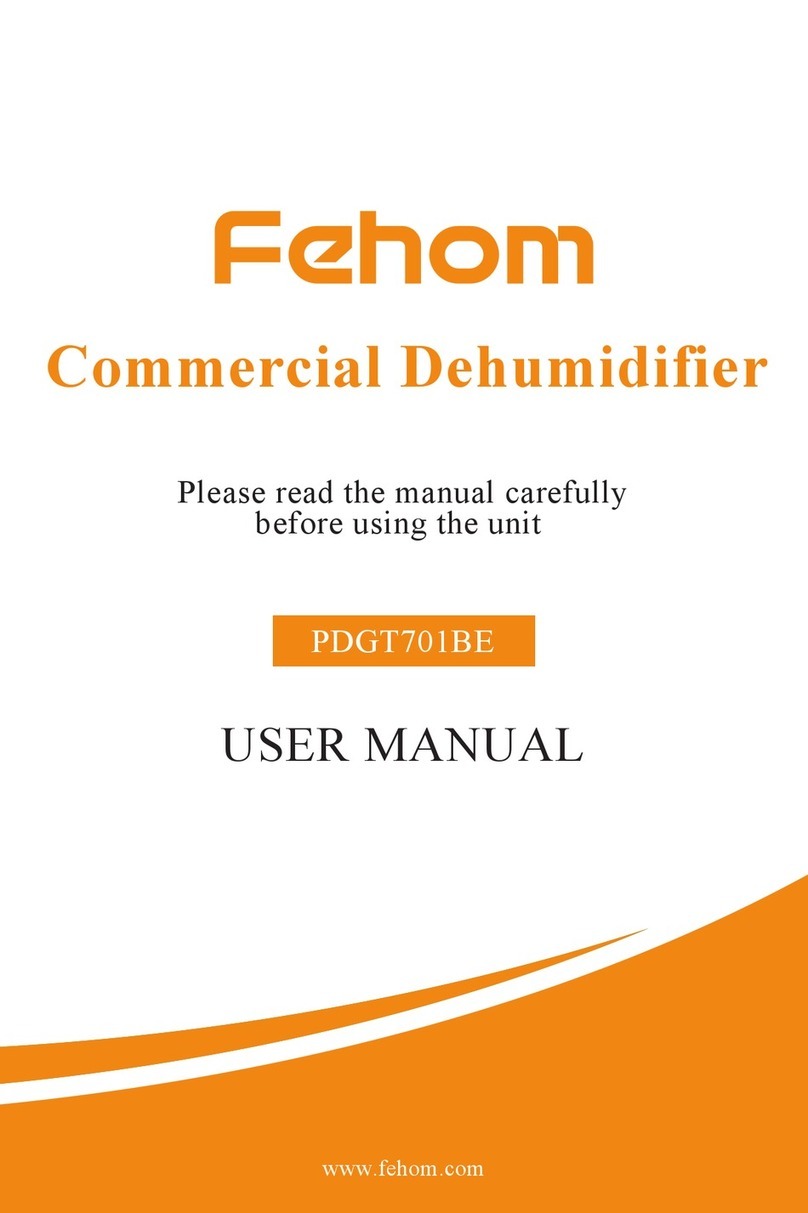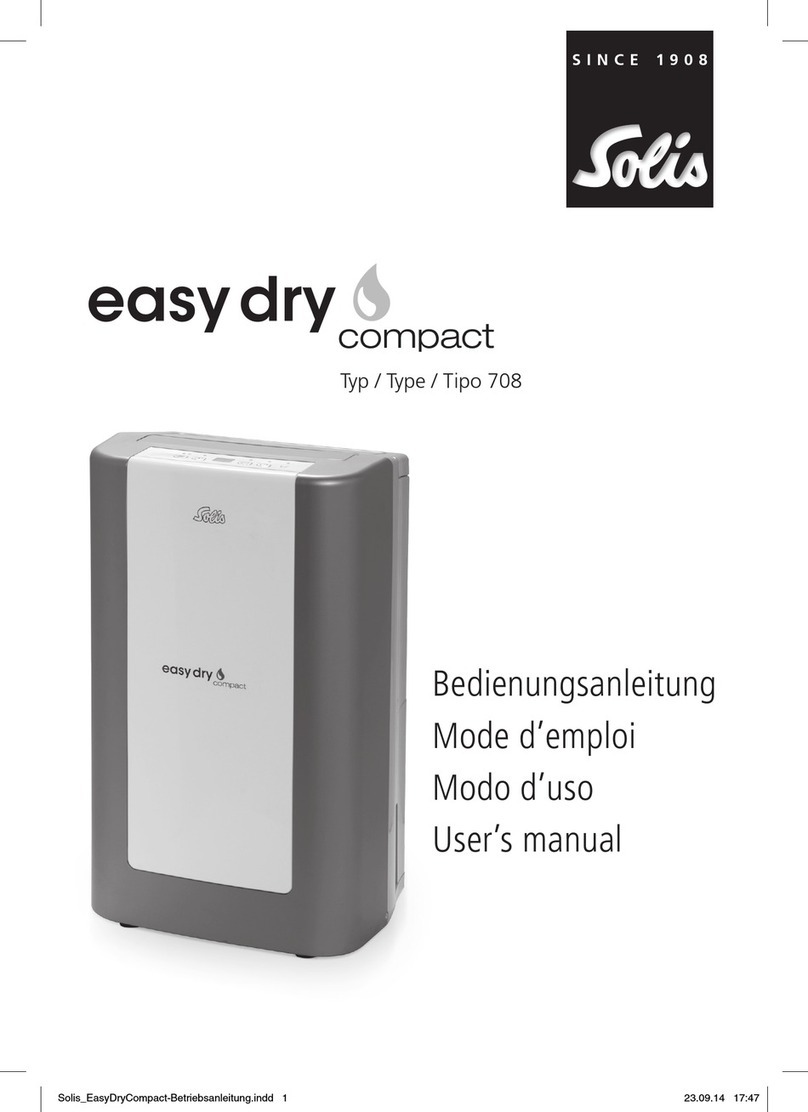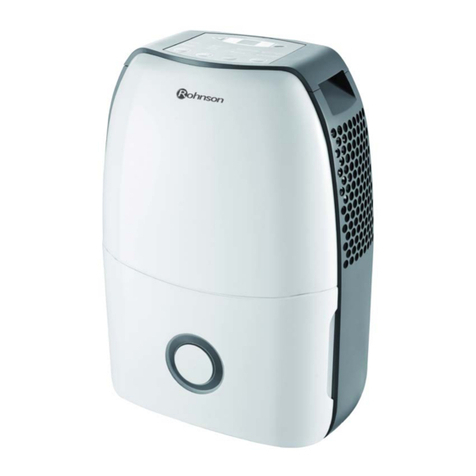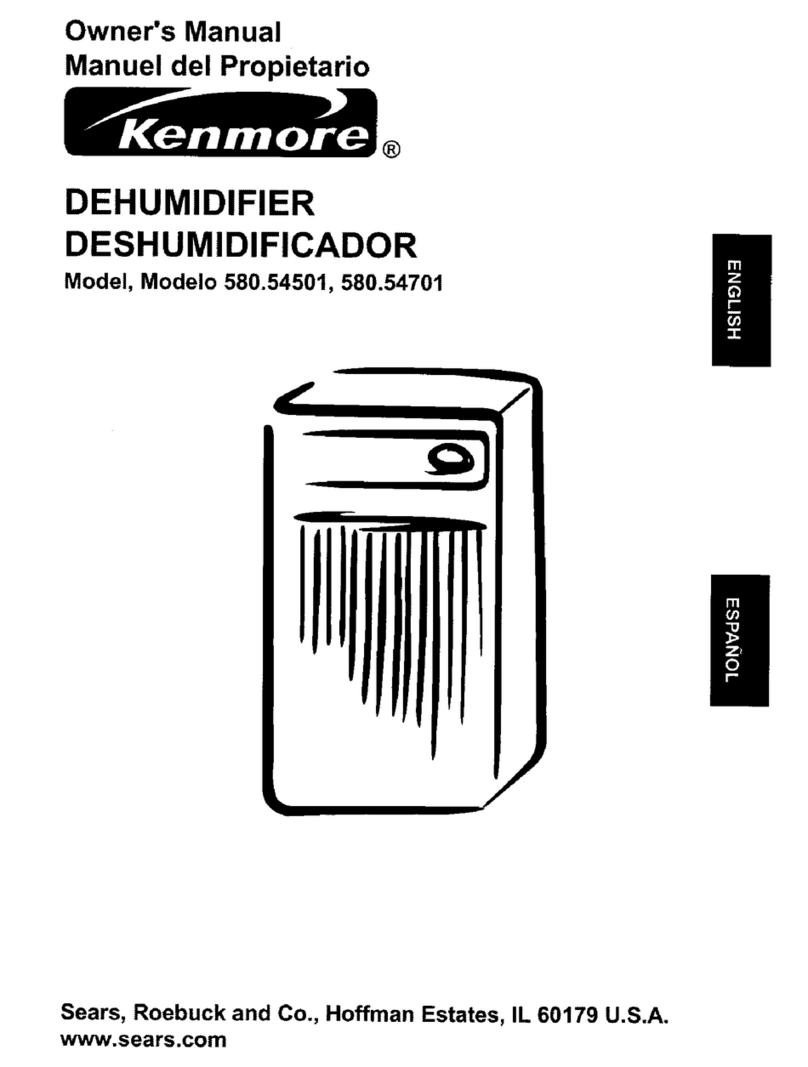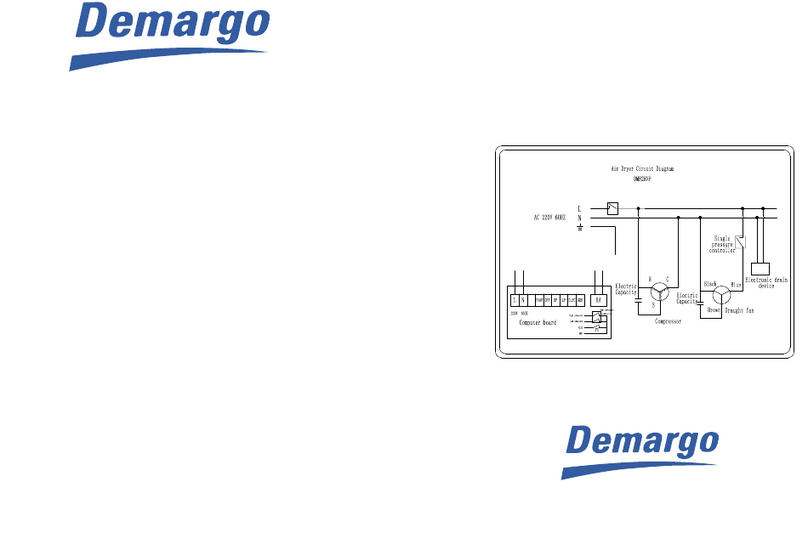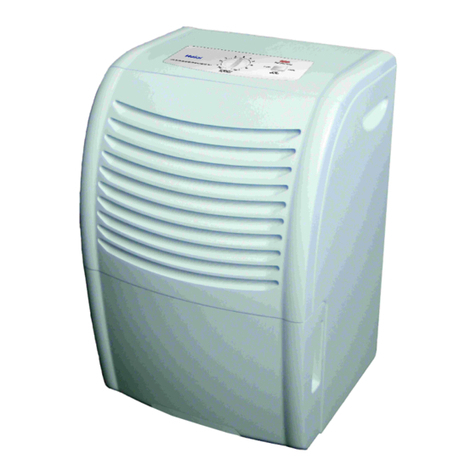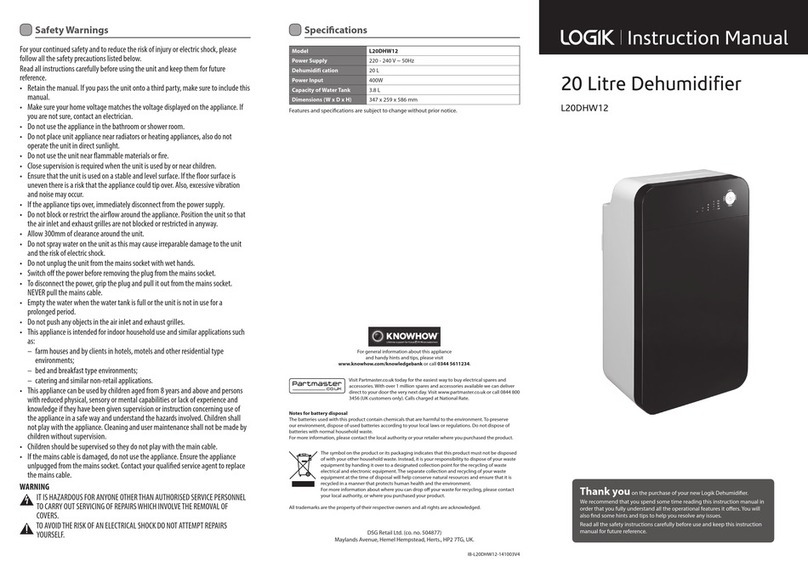
Keys and Functions
Timer: 24 hour countdown, press the key to turn the timer on or off, each press will increase the
operating time by one hour; the unit will operate for 1 to 24 hours. The counting is canceled, pressing
the key again until the number 0 appears on the display.
Internal drying function: Press the INSIDE DRYING key to start the internal drying function
before turning off the unit. This feature prevents mold formation inside the device due to moisture
remaining after it has stopped.
Fan: In automatic dehumidification mode (AUTO) and drying mode (CONTINUOUS), press this
key to change the speedFan: Low Speed / High Speed. For proper operation of the appliance, the fan
operates continuously until it stops.
Display: In automatic dehumidification mode (AUTO) or in textile drying mode (CONTINUOUS),
it will indicate the actual room humidity, the humidity set, and in TIMER mode will indicate the
time set in hours.
Humidity adjustment: In Auto Dehumidification mode (AUTO), press the key to set the
desired humidity, the range of humidity that can be set may vary from 30% to 80%. Starting
from a percentage, you can drop 5% each time you press. (Example: 50% moisture on the screen,
press the humidity adjustment key once and you will reach a value of 45%)
Mode: When you turn on the device or start the timer, press this key to choose Automatic
Dehumidification (AUTO) or Continuous Dehumidification (CONTINOUS) - which can be used
as a drying function for textiles. The LEDs will alternately illuminate when choosing the desired
mode.
On / Off: Press the key to turn on / off the device.
OPERATION AND FUNCTIONS
TIMER to turn off the device
When the device is on, press the TIMER key to activate the function; to set the desired time, press this key
successively, the interval is from 1 to 24 hours and the operating time will be adjusted one hour each time.
When the set time is exhausted, the device will turn off. The number of hours set will be displayed and will
blink 5 times at the setting time for confirmation.
Automatic Dehumidification Mode (AUTO)
In this mode, if the room humidity is higher than 5% humidity, the compressor and fan will start. If the room
humidity is lower than the set humidity by 5%, the compressor will shut down and the fan will operate
according to the initial setting and to read the humidity in the air.
The initial humidity value is 50%.
Continuous dehumidification (CONTINUOUS) - drying function of textile materials
In this Mode, the unit will work regardless of the humidity in the room. The compressor and fan will work, the
fan speed being adjustable.

